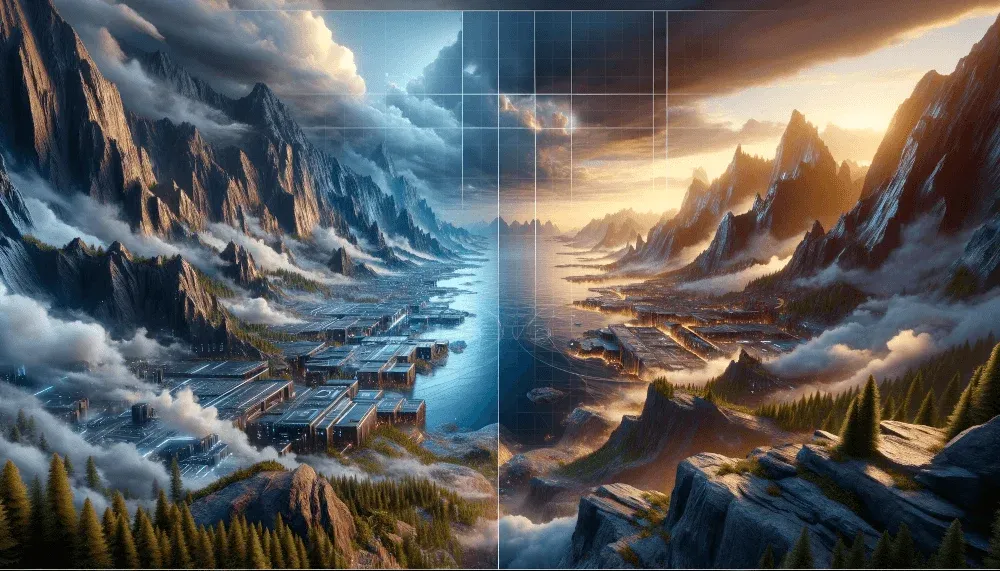Unreal Engine 5's Nanite: A New Era in 3D Rendering Technology

Hey there, tech enthusiasts and game developers! Today, we're diving into the fascinating world of Unreal Engine 5's Nanite technology. This cutting-edge feature is not just a game-changer; it's a complete revolution in the way we approach 3D rendering in games and other visual projects. So, buckle up as we explore the ins and outs of Nanite, complete with examples that'll make your jaws drop!
What is Unreal Engine 5's Nanite?
At its core, Nanite is Unreal Engine 5's virtualized geometry system. It uses a spanking new internal mesh format and rendering technology. The goal? To render intricate details at the pixel scale and manage high object counts like a boss. This isn't just about making things look pretty; it's about smartly focusing on the details that are actually visible to the player, ensuring optimal performance and stunning visuals.
Nanite in Action: Valley of the Ancient
One of the best ways to understand Nanite's capabilities is to look at how it was used in Unreal Engine's sample project, "Valley of the Ancient." This project showcases how Nanite renders highly detailed environments and objects with incredible precision. The level of detail is so high that it was previously unimaginable with older rendering techniques.
Enabling Nanite in Your Projects
So, how do you get this amazing tech working in your own projects? It's actually quite straightforward. For instance, enabling Nanite for a static mesh is as simple as using the code snippet StaticMesh ->SetNaniteEnabled(true). This function allows you to toggle Nanite on a per-mesh basis. But remember, with great power comes great responsibility. While Nanite is incredibly powerful, it's crucial to use it judiciously to get the best results.
The Game-Changer: Importing High-Definition Assets
One of Nanite's standout features is its ability to import high-definition assets directly into Unreal Engine scenes. And here's the kicker: you can do this without the usual hassle of optimizing, creating Level of Detail (LOD) models, or baking normal maps. This dramatically reduces the performance and workflow limitations typically associated with creating real-time content. Imagine the possibilities this opens up for your projects!.
Nanite and Landscapes: A Match Made in Heaven
Nanite isn't just for objects; it works wonders with landscapes too. Its ability to handle complex terrain details while maintaining performance is nothing short of impressive. This makes it an ideal choice for large-scale open-world games and simulations where every detail counts.
Efficiency and Performance: A Balancing Act
While Nanite can handle high polygon counts with ease, it's essential to balance detail with performance. The technology intelligently manages resources to ensure that only the visible details are rendered, making it a highly efficient tool in a developer's arsenal.
Nanite and Lighting: A Dynamic Duo
Nanite's prowess extends to its interaction with Unreal Engine's lighting systems. The detailed geometry rendered by Nanite pairs beautifully with dynamic lighting, resulting in scenes that look incredibly lifelike and immersive.
The Future of Nanite
As we look to the future, Nanite's potential is limitless. It's set to revolutionize not just game development but also fields like architectural visualization and virtual production. The ability to render highly detailed scenes in real-time opens up new avenues for creativity and innovation.
Conclusion:
Unreal Engine 5's Nanite is more than just a new feature; it's a paradigm shift in 3D rendering. By enabling the creation of highly detailed, large-scale environments with unprecedented efficiency, Nanite is paving the way for a new era of visual fidelity in real-time applications. Whether you're a seasoned developer or just starting out, Nanite is a tool that can elevate your projects to new heights.
So, that's our deep dive into Unreal Engine 5's Nanite. Impressed? You should be! This technology isn't just the future; it's the present, and it's here to transform the way we think about and interact with 3D environments. Keep experimenting, keep innovating, and let's see what incredible worlds we can create with the power of Nanite!
